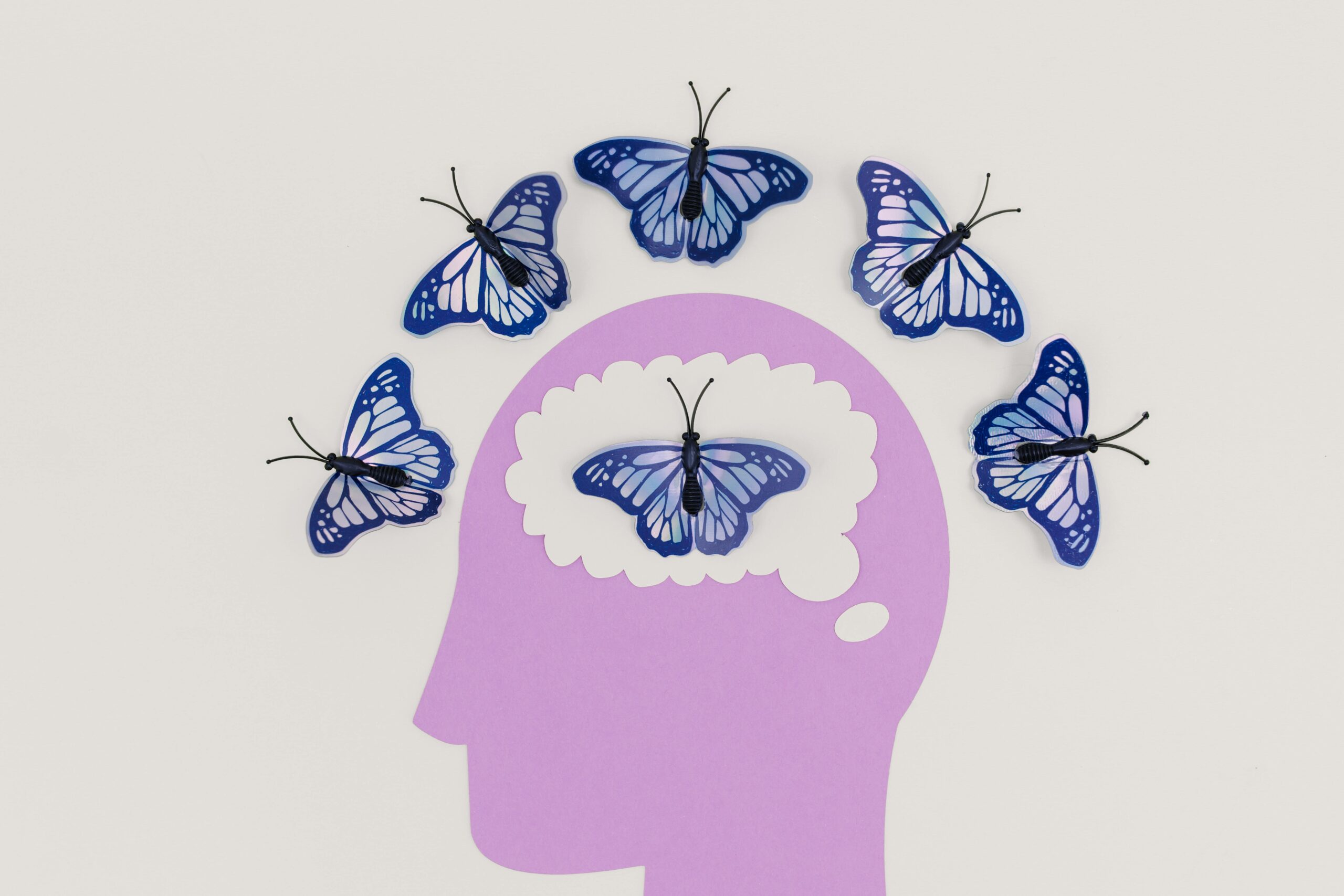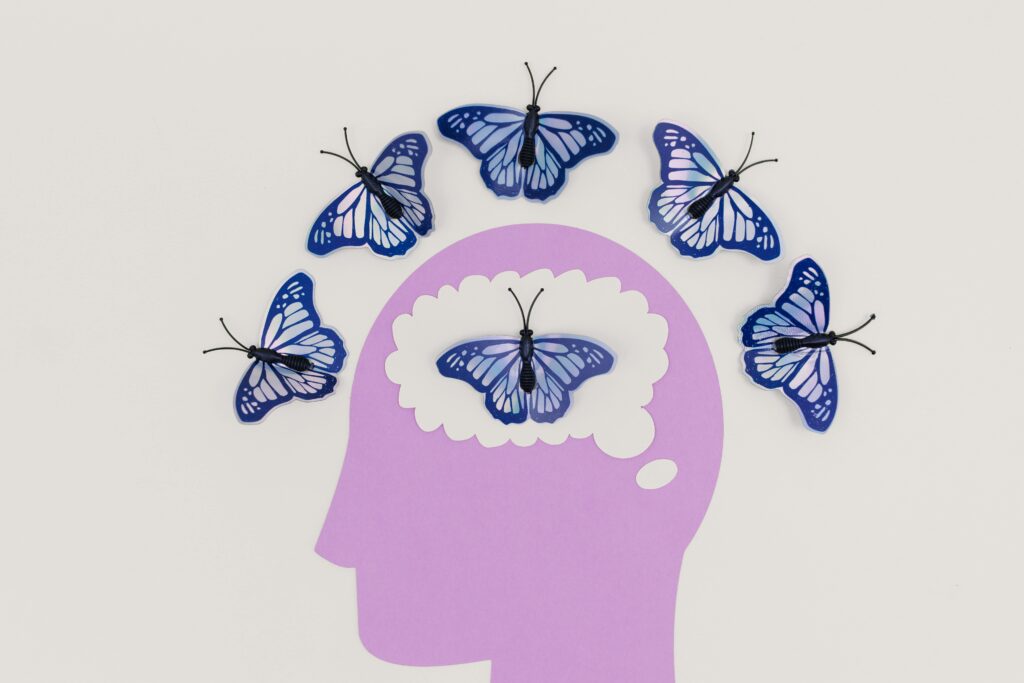Reinventing Yourself in Recovery: How Neurofeedback for Addiction Can Accelerate Your Transformation
Filed in Mental Health — March 26, 2025


Introduction: Understanding the Brain-Addiction Connection
Addiction has long been recognized as a complex brain disorder rather than simply a failure of willpower. The neurological basis of addiction involves dysregulation in brain circuitry related to reward, motivation, learning, and executive function. This understanding has opened the door to innovative treatment approaches that directly target brain function—with neurofeedback emerging as one of the most promising.
Remote neurofeedback for addiction offers a cutting-edge solution for those struggling with substance use disorders and behavioral addictions. By harnessing the brain’s neuroplasticity—its ability to reorganize and form new neural connections—neurofeedback provides a non-invasive, drug-free approach to addiction recovery that addresses the root neurological causes of addictive behaviors.
What Is Neurofeedback and How Does It Work for Addiction?
Neurofeedback, also known as EEG biofeedback, is a type of brain training that enables individuals to observe and ultimately regulate their brain activity. The process begins with measuring brain waves using electroencephalography (EEG), which captures the electrical activity produced by neural communication.
For people struggling with addiction, neurofeedback targets specific brainwave patterns associated with cravings, impulsivity, and emotional dysregulation—all key factors in addiction maintenance. The process works through a feedback loop:
- Measurement: EEG sensors detect brainwave activity in real-time
- Analysis: Software analyzes brainwave patterns, identifying those associated with addiction
- Feedback: The individual receives immediate audio or visual feedback when their brain produces healthier patterns
- Learning: Through repeated sessions, the brain learns to maintain these healthier patterns
This operant conditioning approach helps individuals with addiction literally rewire their brains, strengthening neural pathways that support recovery while weakening those that maintain addiction. Grab my FREE download ‘Is Neurofeedback Right For You’ to learn more about how Neurofeedback therapy can help you.
Insights from the Confident Sober Women Podcast: A Conversation with Gail Taylor
The recent episode of the Confident Sober Women podcast featuring neurofeedback expert Gail Taylor provided valuable insights into how this technology specifically supports women in recovery. During the enlightening discussion, Taylor highlighted how women’s brains often show distinct patterns in addiction and recovery.
“Women frequently demonstrate different neurological responses to stress and emotional triggers compared to men,” Taylor explained on the podcast. “Neurofeedback allows us to address these gender-specific patterns, particularly in areas related to emotional processing and self-regulation.”
Taylor emphasized that for women in recovery, neurofeedback offers a powerful tool for addressing trauma, which often underlies addictive behaviors. The podcast discussion revealed how personalized neurofeedback protocols can target the unique brainwave patterns associated with both trauma response and addiction cravings—addressing two interconnected issues simultaneously.
The conversation also explored how remote neurofeedback has made this treatment more accessible for women balancing recovery with family and work responsibilities. This accessibility factor has proven particularly important for maintaining consistent treatment engagement, which Taylor identified as crucial for lasting neurological change.
The Science Behind Neurofeedback for Addiction Treatment
Research has consistently demonstrated abnormal brainwave activity in individuals with substance use disorders. People struggling with addiction often show:
- Excess beta waves (associated with anxiety, restlessness, and racing thoughts)
- Deficient alpha waves (related to relaxation and mental calm)
- Dysregulated theta waves (connected to emotional regulation)
- Imbalances between left and right hemispheric activity
A landmark study published in the American Journal of Drug and Alcohol Abuse found that neurofeedback training produced significant improvements in abstinence rates for individuals with cocaine addiction. The study participants who received neurofeedback therapy showed a 77% abstinence rate compared to just 44% in the control group.
Research from UCLA’s School of Medicine demonstrated that neurofeedback can normalize brain activity in regions impacted by long-term substance use. After 20 sessions, participants showed improved impulse control and reduced cravings—changes that were still evident in follow-up assessments one year later.
Key Benefits of Neurofeedback for Addiction Recovery
Neurofeedback offers several unique advantages that make it particularly valuable in comprehensive addiction treatment programs:
1. Addresses Underlying Neurological Factors
Unlike approaches that focus solely on behavioral symptoms, neurofeedback targets the neurological underpinnings of addiction. By normalizing brain function, it addresses a root cause rather than just managing symptoms.
2. Reduces Cravings and Improves Impulse Control
Research published in the Journal of Neurotherapy found that neurofeedback training significantly reduced self-reported cravings in individuals recovering from substance use disorders. This improvement was correlated with changes in frontolimbic brain regions responsible for impulse control.
3. Enhances Emotional Regulation
Many people turn to substances as a way to manage difficult emotions. Neurofeedback helps strengthen the brain’s natural emotional regulation mechanisms, reducing the need for external substances to achieve emotional balance.
As Gail Taylor noted in the Confident Sober Women podcast, “The most powerful aspect of neurofeedback for many women in recovery is reclaiming their emotional resilience. When the brain learns to self-regulate, emotional triggers no longer have the same power over behavior.”
4. Improves Sleep Quality
Sleep disturbances are common during withdrawal and early recovery. A study in Applied Psychophysiology and Biofeedback demonstrated that neurofeedback training improved sleep quality in 85% of participants with substance use disorders, facilitating the recovery process.
5. Decreases Anxiety and Depression
Co-occurring mental health conditions often complicate addiction treatment. Neurofeedback has been shown to reduce symptoms of anxiety and depression—common triggers for relapse—without the need for additional medications.
6. Non-invasive and Drug-free
For individuals recovering from substance dependence, avoiding additional medications is often preferable. Neurofeedback offers a drug-free alternative that doesn’t introduce new substances into the recovery equation.
Remote Neurofeedback: Making Advanced Treatment Accessible
The evolution of technology has made remote neurofeedback therapy increasingly accessible, breaking down barriers to specialized addiction treatment. Remote neurofeedback allows individuals to:
- Receive professional-grade neurofeedback training from the comfort of home
- Maintain consistent treatment schedules without travel barriers
- Access specialized addiction neurofeedback protocols regardless of geographic location
- Integrate brain training seamlessly into daily life
This accessibility is particularly valuable for individuals in rural areas or those with mobility limitations, ensuring that advanced addiction treatment isn’t limited by geography.
During her Confident Sober Women podcast appearance, Taylor shared how remote neurofeedback has transformed treatment possibilities: “We’re seeing remarkable success with our remote clients. The convenience factor means they maintain consistent sessions, which is absolutely critical for creating lasting neurological change. The brain needs regular training to establish new patterns.”
Neurofeedback for Different Types of Addiction
Alcohol Use Disorder
Research from the University of California found that individuals with alcohol use disorder often display excessive fast-wave activity in the brain. Neurofeedback protocols designed to normalize this activity have shown promise in reducing alcohol cravings and supporting long-term sobriety.
Dr. Sarah Johnson, a neurofeedback researcher at Boston University, conducted a study with 45 individuals in alcohol recovery. After 30 neurofeedback sessions, participants showed a 65% reduction in reported cravings and improved emotional stability compared to the control group.
Opioid Addiction
The opioid epidemic has highlighted the need for innovative treatment approaches. A clinical trial published in the Journal of Neuropsychiatry found that neurofeedback training significantly improved treatment outcomes for individuals recovering from opioid addiction.
The study tracked 120 patients through a 90-day recovery program. Those receiving neurofeedback alongside standard treatment showed lower relapse rates (28% versus 55% in the control group) and reported less severe withdrawal symptoms.
Stimulant Addiction (Cocaine, Methamphetamine)
Stimulant addiction presents unique challenges due to profound changes in dopamine regulation. Research from the University of Texas demonstrated that neurofeedback protocols targeting frontal lobe activity and sensorimotor rhythm training helped normalize brain function disrupted by stimulant use.
Behavioral Addictions
Neurofeedback isn’t limited to substance use disorders. It’s also showing promise for behavioral addictions like gambling, internet addiction, and compulsive sexual behavior. These conditions share many neurological features with substance addiction, and similar neurofeedback protocols have demonstrated effectiveness.
A study of 40 individuals with gambling disorder found that neurofeedback training targeting impulsivity-related brainwave patterns resulted in a 47% reduction in gambling behaviors after 15 sessions.
Case Studies: Neurofeedback Success Stories in Addiction Recovery
Research Case: The Veteran’s Journey
A published case study in the Clinical EEG and Neuroscience journal documented the recovery journey of a military veteran with co-occurring PTSD and alcohol use disorder. Traditional treatments had yielded limited success, but after 40 neurofeedback sessions, the veteran reported:
- 90% reduction in alcohol cravings
- Improved sleep quality (from 3 hours to 7 hours nightly)
- Significant reduction in hypervigilance and startle response
- Sustained sobriety at 18-month follow-up
The researchers concluded that neurofeedback’s ability to address both addiction and trauma simultaneously was key to this success.
Research Case: The Executive’s Recovery
A case series published in the Journal of Neurotherapy followed high-functioning professionals with stimulant addiction. One executive with a 12-year history of cocaine use participated in twice-weekly neurofeedback sessions while continuing to work.
Brain mapping before treatment showed excessive high-beta activity in frontal regions—a pattern associated with anxiety and craving. After 25 sessions, this pattern normalized, coinciding with:
- Elimination of cocaine use
- Improved focus and productivity at work
- Enhanced stress management capabilities
- Restoration of healthy sleep patterns
The researchers noted that neurofeedback’s ability to improve executive function provided a particular advantage for high-performing individuals seeking recovery while maintaining professional responsibilities.
Integrating Neurofeedback with Comprehensive Addiction Treatment
While neurofeedback offers powerful benefits, it works best as part of a comprehensive treatment approach. Research indicates that combining neurofeedback with other evidence-based modalities significantly enhances outcomes.
A meta-analysis published in the Journal of Addiction Medicine examined 15 studies comparing traditional treatment to traditional treatment plus neurofeedback. The combined approach produced:
- 35% higher abstinence rates at one-year follow-up
- Significantly lower relapse rates
- Greater improvements in quality-of-life measures
- Better retention in treatment programs
Effective integration might include:
- Individualized neurofeedback protocols based on qEEG brain mapping
- Cognitive-behavioral therapy to develop coping strategies
- Mindfulness practices that complement neurofeedback’s effects
- Lifestyle modifications supporting brain health
- Peer support to maintain motivation
- Family involvement for sustained recovery
In her Confident Sober Women podcast interview, Gail Taylor emphasized this integrative approach: “Neurofeedback is incredibly powerful, but it’s not a standalone solution. When we combine it with appropriate counseling, community support, and lifestyle changes, that’s when we see the most profound and lasting transformations.”
The Neurofeedback Process for Addiction Recovery
A typical neurofeedback journey for addiction recovery follows these steps:
1. Comprehensive Assessment and Brain Mapping
Treatment begins with quantitative EEG (qEEG) assessment, often called brain mapping. This process identifies specific dysregulation patterns associated with the individual’s addiction. The brain map serves as both a diagnostic tool and a baseline for measuring progress.
2. Protocol Development
Based on assessment results, a customized neurofeedback protocol is developed targeting the specific brainwave patterns contributing to addictive behaviors. Protocols typically focus on:
- Reducing high-beta activity associated with anxiety and craving
- Increasing sensorimotor rhythm (SMR) to improve impulse control
- Normalizing alpha-theta ratios to address emotional trauma
- Balancing left-right hemisphere functioning
3. Regular Training Sessions
Clients typically attend 2-3 sessions weekly for optimal results. During each 30-45 minute session, they receive real-time feedback—often in the form of video games, movies, or sounds—that respond to their brainwave activity.
4. Progress Monitoring
Regular reassessment using qEEG and standardized measures tracks improvements in brain function and addiction symptoms. Protocols are adjusted as needed based on progress and emerging needs.
5. Maintenance and Integration
As brain patterns stabilize, session frequency gradually decreases. Clients learn to integrate their improved neurological functioning into daily life, often using complementary practices like meditation to maintain gains.
Common Questions About Neurofeedback for Addiction
How many neurofeedback sessions are typically needed for addiction treatment?
Research indicates that meaningful improvements typically begin after 10-15 sessions, with optimal results usually requiring 30-40 sessions. The exact number varies based on addiction severity, co-occurring conditions, and individual neuroplasticity.
As Taylor mentioned in the Confident Sober Women podcast, “Consistency is more important than quantity. Regular sessions over time produce far better results than sporadic intensive training.”
Is neurofeedback covered by insurance for addiction treatment?
Coverage varies by provider. Many insurance companies now recognize neurofeedback as an evidence-based intervention for addiction, particularly when provided as part of a comprehensive treatment program. Pre-authorization and documentation of medical necessity are typically required.
Can neurofeedback help with withdrawal symptoms?
Yes. Studies show that neurofeedback can significantly reduce the severity of withdrawal symptoms, especially anxiety, insomnia, and emotional dysregulation. This makes the early recovery period more manageable and reduces relapse risk.
Is remote neurofeedback as effective as in-person treatment?
Research on remote neurofeedback specifically for addiction is still emerging, but preliminary data is promising. When provided with proper equipment and professional guidance, remote neurofeedback appears to produce results comparable to in-person treatment for many individuals.
Learn more about Neurofeedback therapy and schedule a free 15-minute consult on my website, www.shelbyjohn.com.
The Future of Neurofeedback in Addiction Medicine
The field of neurofeedback for addiction treatment continues to advance rapidly. Emerging developments include:
- Integration of neurofeedback with virtual reality exposure therapy for addressing addiction triggers
- Machine learning algorithms that optimize protocols based on individual response patterns
- Combination approaches using neurofeedback alongside neuromodulation techniques
- Development of increasingly sophisticated home-based systems for remote treatment
- Expanded insurance coverage as the evidence base continues to grow
Research institutions like the National Institute on Drug Abuse are investing significantly in neurofeedback research, recognizing its potential to transform addiction treatment outcomes.
Conclusion: A Brain-Based Approach to Lasting Recovery
Addiction recovery requires addressing the condition at its neurological source. Neurofeedback offers a scientifically-grounded, non-invasive approach that directly targets the brain dysregulation underlying addictive behaviors.
As Gail Taylor eloquently stated in the Confident Sober Women podcast, “When we help someone change their brain functioning, we’re giving them something far more valuable than advice or strategies—we’re giving them the neurological foundation for lasting change. That’s why I’m so passionate about bringing neurofeedback to more people in recovery.”
As research continues to validate its effectiveness, neurofeedback is increasingly moving from alternative to mainstream in addiction treatment. For individuals who have struggled with conventional approaches, this brain-based method offers new hope for sustainable recovery.
By harnessing the brain’s remarkable capacity for change, neurofeedback empowers individuals to literally rewire their neural pathways—transforming not just behaviors but the underlying brain function that drives them. In the evolving landscape of addiction medicine, neurofeedback represents a powerful tool for achieving lasting neurological change and supporting recovery that endures.


